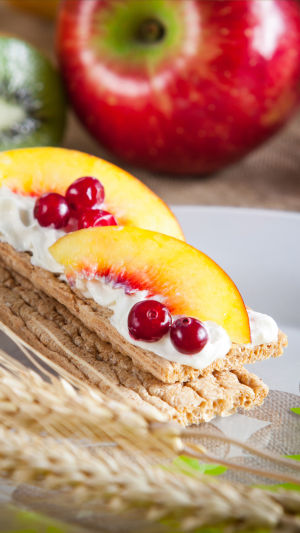Mille-feuille, known by various names like Napoleon pastry and Napoleon cake, is a delectable custard dessert originating from France.
The traditional Mille-feuille comprises three layers of flaky puff pastry held between two layers of creamy filling, though occasionally jam finds its way in. Its top layer typically showcases alternating white and brown strips.
In the French culinary context, the term "Mille-feuille" encompasses not just the puff pastry dessert but also other treats featuring diverse ingredients.
These treats often involve fruit or cream frosting nestled within and are stacked into tower-like structures.
The customary shape of Mille-feuille is rectangular, a confection whose existence has been documented in various 16th-century cookbooks. However, the precise origins remain enigmatic.
A quintessential French dessert, the Mille-feuille comprises three layers of browned pastry interspersed with two layers of luscious cream sauce. It can be adorned with powdered sugar or jelly and can be accompanied by jam or tangy fruits.
Crafting the layers for the Mille-feuille pie crust involves a meticulous process. It commences with the incorporation of fat into the flour to achieve a crisp yet easily dissolvable texture.
This is achieved through a series of three folds, with rolling, folding, refrigeration and baking being the key steps.
The outcome can yield an astonishing 729 layers of pastry. Some pastry virtuosos even endeavor to create over two thousand layers, resulting in a paper-thin, melt-in-the-mouth texture.
The fabrication of Mille-feuille pastry involves layering thin sheets of dough and butter. This is achieved by enveloping a sizable butter portion in the thinly rolled dough, followed by repetitive cycles of folding, rolling, flipping, resting, and more rolling.
With each iteration, additional layers of butter and dough amalgamate, culminating in a multi-layered pastry resembling a book, with each layer being remarkably delicate.
This meticulous process, known as lamination, bestows the baked Mille-feuille with its distinctive appearance. Consequently, Mille-feuille pastry is celebrated as one of the thinnest doughs in the realm of pastries.
The creation of Mille-feuille demands dedication, chiefly in the form of ceaseless rolling. The flour and cream employed in the preparation of puff pastry are intrinsic to the dessert's character, and the folding process involves dividing the pastry into thirds every three layers.
This meticulous approach results in a classic Mille-feuille featuring precisely 729 layers. While the labor may appear significant, the most time-consuming aspect involves refrigerating the pastry after each fold, a step that takes approximately 8 to 10 hours to complete.
In terms of flavor, Mille-feuille remains elegantly simple; however, its true allure lies in its unparalleled texture – thin, even layers that harmonize to create a truly delightful treat.





